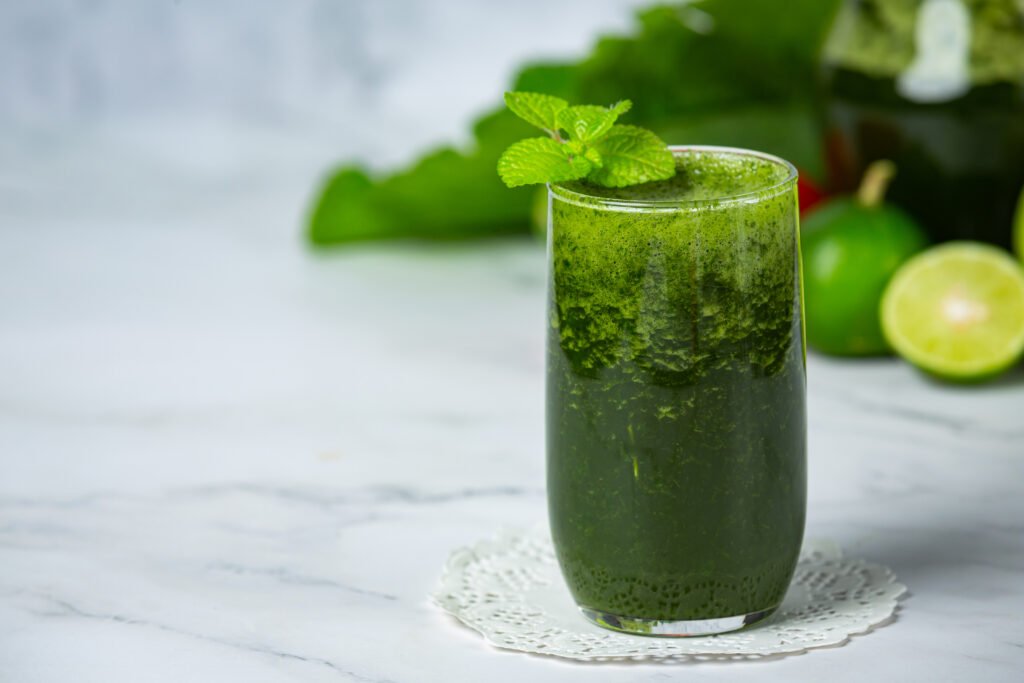Nausea, that awful unease in your stomach that threatens to erupt, can strike at any time and leave you feeling weak and miserable. But before you resign yourself to a day of discomfort, take heart! This post will delve into the many causes of nausea, from the common culprits like motion sickness to the less obvious ones. We’ll also explore a delicious selection of foods to help calm your tummy troubles and get you back on your feet quickly.
What Is Nausea?
Nausea, that familiar queasy feeling in your gut, is a common experience that can leave you feeling drained and uncomfortable. While the urge to reach for anti-nausea medication might be strong, it’s essential to understand the source of your nausea first. Causes can range from the thrilling (but stomach-churning) ride on a roller coaster to the discomfort of acid reflux or even an ear infection. Remember, nausea isn’t a disease but a symptom of various underlying conditions or the body’s response to harmful substances, like undercooked food or certain medications.
Acute Nausea vs. Chronic Nausea
While nausea is a common experience and often resolves on its own, understanding the duration of your discomfort can be critical. If your nausea improves within 24 hours, it’s considered acute. It might be caused by a passing viral illness, a food allergy, the thrills (and chills) of motion sickness, overeating, or even food poisoning. However, if nausea lingers for more than a day or becomes a frequent visitor over weeks or months, it may be considered chronic. Chronic nausea can be constant or come in waves, triggered by something in your environment or within your body. In these cases, it’s essential to consult a doctor to identify the underlying cause and develop a treatment plan to manage this persistent discomfort.
Most Common Cause of Nausea
While nausea is a frequent visitor for many, the culprit behind the queasiness can vary. According to the CDC, the most common cause is norovirus, a familiar “stomach bug” that often resolves independently without needing treatment. This sneaky virus causes a viral illness called gastroenteritis, leading to symptoms like acute nausea. It’s important to remember that although the discomfort might feel similar to the flu, norovirus is a different condition altogether.
Common Causes of Chronic Nausea
Acute nausea usually fades within a day and can stem from various common culprits. Illnesses, food allergies, a sudden digestive issue, or even motion sickness can all trigger that unpleasant queasiness. However, if your nausea becomes chronic, lasting for weeks or months, the reasons behind it can be more diverse. Some of the most frequent causes of constant nausea include inflammatory bowel diseases (IBD) like Crohn’s disease or ulcerative colitis, irritable bowel syndrome (IBS), migraines, the persistent dizziness of motion sickness, and gastroesophageal reflux disease (GERD), better known as heartburn. Peptic ulcers, commonly referred to as stomach ulcers, certain medications and cancer treatments, intestinal blockages, a condition called gastroparesis that affects stomach emptying, and even psychological conditions like bulimia can also contribute to chronic nausea. For expecting mothers, “morning sickness” during the first trimester is a well-known nausea trigger.
- Bulimia
Bulimia, a common eating disorder, isn’t just about weight loss; it’s a complex mental condition. People with bulimia experience intense urges to purge after eating, leading them to binge and then force themselves to vomit in an attempt to control their weight. The constant practice of throwing up after large meals can take a toll on the body, and long-term bulimics often experience chronic nausea, especially after eating. If you suspect you or someone you know struggles with bulimia, seeking professional help from a psychiatrist, psychologist, or psychotherapist is crucial.
- Gastroparesis
One condition that can trigger chronic nausea is gastroparesis, sometimes called delayed gastric emptying. This disorder disrupts the stomach’s ability to move food efficiently from the stomach to the small intestine. Imagine hitting pause on digestion—that’s essentially what happens with gastroparesis. The result can be slow stomach emptying or even complete blockage, leading to nausea, feeling full very quickly after eating, and unexplained weight loss. The causes of gastroparesis can vary, but it can sometimes be a complication of diabetes. If you’re experiencing chronic nausea alongside these other symptoms, it’s essential to see a doctor for a diagnosis and personalized treatment plan.
- Peptic Ulcer Disease:
Peptic ulcers, also known as stomach ulcers, can be the culprit behind chronic nausea. These ulcers often cause abdominal pain, nausea, vomiting, and bloating, especially after eating. Interestingly, some people with peptic ulcers might not experience any symptoms until an external factor triggers them. Common triggers include nonsteroidal anti-inflammatory drugs (NSAIDs) like ibuprofen or aspirin and even stress. When triggered, the ulcer can cause stomach acid to erode the small intestine lining or stomach, leading to severe pain and discomfort. The good news is that peptic ulcers are treatable. Doctors recommend medications like H2 blockers and proton pump inhibitors (PPIs) to promote healing and reduce stomach acid production.
- Gastroesophageal Reflux Disease
If your nausea goes hand-in-hand with heartburn after eating, then gastroesophageal reflux disease (GERD) could be the culprit. This condition occurs when stomach contents back up into the esophagus, the tube that connects your mouth to your stomach. This backflow irritates the esophagus, causing that uncomfortable burning sensation in your chest, known as heartburn. In many cases, doctors recommend lifestyle changes, such as avoiding trigger foods and eating smaller meals, alongside over-the-counter medications to manage GERD symptoms and prevent them from disrupting your life.
- Intestinal Obstruction
In severe cases, constant nausea can be a sign of intestinal obstruction, a blockage that prevents stool from moving through the intestines. This blockage can cause intense and severe pain alongside nausea, as well as vomiting, bloating, and constipation. Unlike some other causes of nausea, intestinal obstruction is a tough condition that often requires surgical intervention, such as intestinal obstruction repair, to remove the blockage and restore proper function. If you’re experiencing these symptoms, seeking medical attention immediately is crucial.
- Certain Medications & Cancer treatments
Unfortunately, certain medications and cancer treatments themselves can be the source of chronic nausea. This includes chemotherapy drugs, other cancer medications, and even prescriptions for unrelated conditions. Radiation therapy, mainly when directed at the brain, liver, or gastrointestinal tract, can also trigger chronic nausea. If you suspect your nausea is a side effect of medication or cancer treatment, talk to your doctor. They can work with you to manage these symptoms through various strategies, including dietary adjustments and lifestyle changes. They might also be able to explore alternative medications or adjustments to your treatment plan to reduce nausea.
- Morning Sickness
For expecting mothers, nausea is a familiar foe, often rearing its head during the first trimester as a common symptom of pregnancy. This nausea, often nicknamed “morning sickness,” can strike at any time of day, not just in the mornings. To combat the nausea and minimize its impact, pregnant people can try at-home remedies, like nibbling on dry toast upon waking or munching on crackers before bed. However, if nausea becomes a persistent problem, consulting an OB/GYN is recommended. They can provide personalized guidance and explore additional strategies to manage pregnancy-related vomiting and nausea, ensuring a smoother journey through those early months.
- Inflammatory Bowel Disease
Inflammatory bowel disease (IBD) is an umbrella term for two chronic conditions – Crohn’s disease and ulcerative colitis. Both cause inflammation in the gastrointestinal (GI) tract and can even trigger problems in the central nervous system. This inflammation can lead to various unpleasant symptoms, including nausea, diarrhea, blood in the stool, and fatigue. The exact cause of IBD remains unknown, but it’s believed to be linked to a weakened immune system. Treatment typically involves medication to manage inflammation and symptoms. In severe cases, surgery may be necessary to remove damaged sections of the GI tract, such as ulcers or fistulas.
- Irritable Bowel Syndrome
Irritable bowel syndrome (IBS) is a condition that disrupts the normal function of your gastrointestinal (GI) tract, leading to a cluster of symptoms related to your gut and bowel movements. People with IBS often experience a combination of diarrhea, constipation, or even alternating between the two, along with nausea. Diagnosing IBS requires a doctor’s evaluation. Treatment typically involves a two-pronged approach: medication to manage symptoms and lifestyle changes to promote gut health. These lifestyle changes can include stress management techniques to improve mental health or incorporating probiotics into your diet to support a healthy gut microbiome.
Foods to eat when nausea
1. Crackers
Bland and dry crackers are a classic choice for settling nausea. Their simple flavor profile is accessible on the stomach, and the starchy carbs offer a quick energy boost. They’re also easy to digest and won’t overwhelm your queasy tummy. So next time nausea strikes, reach for a cracker (or two) and see if it helps calm your stomach woes.

2. Ginger
Ginger has been a trusted natural remedy for nausea for centuries. This wonder ingredient boasts anti-inflammatory properties that can soothe an upset stomach and may even speed up digestion. Whether you enjoy it fresh, dried, or brewed into a calming tea, ginger’s unique flavor and potential nausea-fighting power make it a worthy addition to your wellness routine.

3. Bland foods
When nausea strikes, bland foods become your best friends. These gentle options are easy to digest and won’t irritate your stomach. Think simple starches like toast, rice, or potatoes, or opt for plain crackers. Bland doesn’t have to be boring; try adding a mild flavor with a banana or a sprinkle of cinnamon. The key is to offer your tummy soothing comfort until it feels settled again.

4. Mint
With its refreshing aroma and cooling sensation, fresh mint can be a breath of fresh air for nausea sufferers. The menthol in mint leaves may have muscle-relaxing properties that can ease stomach discomfort, and some find the scent itself calming for nausea. Whether you sip on excellent mint tea, chew on a few fresh leaves, or inhale an essential oil diffuser scent, mint offers a natural approach to soothing your queasy stomach.

5. Yogurt
While not a guaranteed cure, yogurt may offer some relief for nausea. Plain yogurt is bland and easy to digest, providing a gentle option for a queasy stomach. The probiotics in yogurt, particularly Lactobacillus strains, might also be helpful. These live bacteria contribute to a healthy gut microbiome, which can play a role in digestion and even ease nausea. Opt for plain yogurt and avoid sugary varieties to keep things gentle on your tummy.

6. Lemon
While the jury’s still out on lemon being a magic bullet for nausea, its refreshing scent might offer relief. The citric acid in lemons can stimulate saliva production, which can sometimes help settle a queasy stomach. If you want to try it, sniff a freshly cut lemon or dilute a small amount of lemon juice in water. Remember, though, that lemon juice can be acidic and irritate an upset stomach, so start with a minimal amount and listen to your body.



